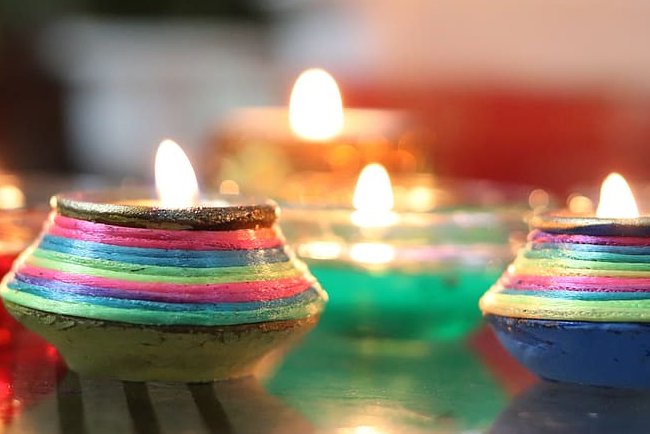
5 References of Diwali in the Ancient Literature
-
A thread tracing the ≈ 2000 years' thread of celebrations and joy.
-
A thread tracing the ≈ 2000 years' thread of celebrations and joy.

A living tradition of joy, Diwali may be the oldest extant festival of India. Celebrated across India for ≈ 2000 years.
Here we see 5 ancient references to Diwali.
The thread is based on the research of Dr. P. K. Gode; published in "Studies in Indian Cultural History".
Here we see 5 ancient references to Diwali.
The thread is based on the research of Dr. P. K. Gode; published in "Studies in Indian Cultural History".
Circa 50-400 CE - Vatsayana's Kamasutra
Vatsayana's Kamasutra mentions "Yaksharatri" as a major festival. Celebrated on the new moon of Kartika month with vigour and joy.
Hemachandra in 11th Century was the first scholar to equate it with Diwali.
Vatsayana's Kamasutra mentions "Yaksharatri" as a major festival. Celebrated on the new moon of Kartika month with vigour and joy.
Hemachandra in 11th Century was the first scholar to equate it with Diwali.
606-648 CE - Nagananda by Sri Harsa (Emperor Harshavardhan of Kannauj)
In Nagananda, Harsa refers to Deep-Pratipadutsav (दीपप्रतिपदुत्सव ), and it also refers to the custom of presenting garments to the bride and bride-groom. (similar to present-day tradition in many parts)
In Nagananda, Harsa refers to Deep-Pratipadutsav (दीपप्रतिपदुत्सव ), and it also refers to the custom of presenting garments to the bride and bride-groom. (similar to present-day tradition in many parts)
Bet. 500-800 CE - Neelmat Purana (Kashmir)
Neelmata purana provides a detailed description of festivities: all-round illuminations, hoisting up of festoons, presenting garments to loved ones,brahmins and servants, feasting and wearing rich apparels and jewels.
Neelmata purana provides a detailed description of festivities: all-round illuminations, hoisting up of festoons, presenting garments to loved ones,brahmins and servants, feasting and wearing rich apparels and jewels.
959 CE - Yashas-tilaka-champu by Somadeva Suri
Written during the reign of the Rastrakuta king Krishna (III) of Malkhed (karnataka), the text mentions the custom of decorating houses and placing rows of lamps on house tops. It mentions music and general merrymaking.
Written during the reign of the Rastrakuta king Krishna (III) of Malkhed (karnataka), the text mentions the custom of decorating houses and placing rows of lamps on house tops. It mentions music and general merrymaking.
1030 CE - Alberuni in his "Enquiry into India"
He calls if "Dibali", and writes about the all-around illumination, festive dresses, making presents of betel leaves and areca nuts, and visiting temples and giving alms.
He calls if "Dibali", and writes about the all-around illumination, festive dresses, making presents of betel leaves and areca nuts, and visiting temples and giving alms.
As we move further into the timeline, references abound. But these 5 of the earliest ones.
The details of these references show that Diwali as a festival is dedicated to various deities, marks multiple occasions including Kharif/Rabi cycles of agriculture and signals the arrival of the beautiful Sharad (winter).
Dr. P. K. Gode wrote on it in detail in the 2nd volume of his seminal work: Studies in Indian Cultural History. Based on his work, Dr. Shreenand Bapat (Registrar & Curator, BORI) delivered a talk on the history of Diwali last year.
Here is the link:
Here is the link:
This Diwali, in keeping up with the spirit of above descriptions, "Make merry" and light up your space.
We at @BhandarkarI wish you all a very happy Diwali.
We at @BhandarkarI wish you all a very happy Diwali.
• • •
Missing some Tweet in this thread? You can try to
force a refresh




